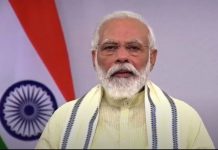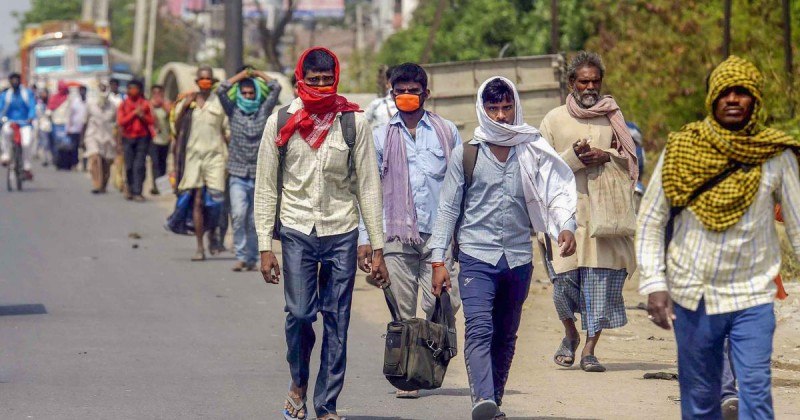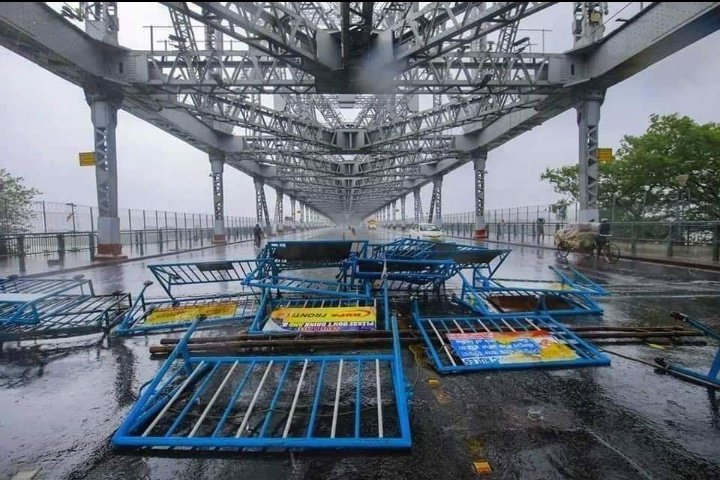The much awaited moment of the year finally arrived on May 23rd 2019 when it was revealed who India chose as its representative, as its Prime Minister.
It was shocking, terrific, historic as well quite intimidating to witness the election result. What not did the Opposition do, from Mahagathbandhan to United India rally but still they couldn’t manage to win over brand Modi.Yes, it is “Namo Again” an acronym which means Narendra Modi again. BJP once again managed to come back to power and this time with an even higher percentage of votes than their previous win in 2014.
No other opposition could even manage to come near to the number of vote share BJP received in 2019. As reported by BBC news, the election results of 2019 as of 8 p.m were, BJP alone: 343 seats, Congress 84 seats and others 110 seats.
The vote share for BJP this time was even higher than 2014, where the BJP won 282 seats and with its allies, NDA they secured 336 seats.
For any party to form government in the Lok Sabha it is mandatory to secure at least 272 seats and this time BJP has exceeded the limit tremendously.
This historic win is not only for Narendra Modi but for every BJP supporter who is affiliated with the party from bottom up to the grassroots. Their victory is accepted and they are welcomed with open heart by the people of the state.
This is a historic mandate in the political history of India and by the virtue of which the party is not only responsible to the voters who voted for them but also for those who did not vote for them. Overall they are now accountable towards to the state of India.
Beside the election jittery, the celebration of the party’s victory what has to be understood here, is no matter which party formed government the issues in hand will have to be dealt by each of them equally.
Now that we have a winner: BJP, let me bring this to notice that beyond the cheers and laughter, there are eyes filled with hope and there are hands demanding justice. We cannot forget climate change, agricultural crisis and women safety and many other such issues which need urgent attention beyond party politics.
Climate Change: Issue of urgent importance
The climate is changing, it is a global phenomenon and by now all of us are aware about it and we can feel it too. In India, Delhi’s Air Pollution and deteriorating air quality level is no longer a hidden reality. Poor air quality in Delhi was visible since 2014 and it was documented World Health Organization as well. In their survey of over 1600 cities in the world, Delhi was observed to be one of the worst cities in terms of air pollution. The consequence of air pollution has led to maximum number of deaths in the country. Recently students from across the global united to ask from their respective governments what they are doing to save the planet form climate change. The agenda laid in the Paris agreement has not been fulfilled. Rather the working on the issue of climate change we have witnessed our government fighting on matters like “Mandir kaha Banega” (where will the temple be made: Ram Janam Bhoomi issue). The government irrespective of party affiliation has to understand that this is no longer a matter of primary importance. What is important is that “we are losing our right to breathe” hence they need to address the issue of climate change as urgently as possible.
The concerns of the Farmers in the State
During the BJP tenure from 2014 to 2019, one of the largest farmer’s movements was witnessed. We saw thousands of farmers taking to street. Coming forward for getting their voices heard and demanding justice from the government. The members of Bhartiye Kisan Union and thousand other farmers rallied from Haridwar to Delhi on tractors and on foot in order to reach the parliament and put forth their issues in front of the government. They had a range of demands such as loan waiver, subsidized electricity and fuel, pension for farmers and proper implementation of the recommendations of the Swaminathan Commission. The centre welcomed them with lathi charges and tear gas and stopped them at various place, half of their demands were accepted and half still unaddressed. The number of demands accepted and unaccepted in not the solution to the larger problem of agrarian crisis in India.
In lieu of climate change, the government really needs to gear up to transform nay bring a revolution in the agricultural sector such that farming as an occupation can become more inclusive and productive.
Growing Water Crisis and the threat of Drought
Yet another challenge which needs urgent heed is to manage disaster warning, recently Drought Warning System or DEWS, a Drought monitoring platform released their report according to which 42 % of India’s land area is facing drought with 31.17 % area being moderately dry, 16.57 percent area being severe dry and 11.04 per cent area being extreme dry. DEWS raised drought warning for states like Andhra Pradesh, Bihar, Jharkhand, Gujrat, Karnataka, Maharashtra, Tamil Nadu, Rajasthan, Telangana and parts of North East India. These states, the body stated were more vulnerable to drought. One of the key reasons for this calamity coming closer is because of the low level of rainfall received by the country and the decreasing level of ground water in states.
Right before elections, almost every party in their election manifesto promised to bring in development, education, technology, roads, CCTV cameras, increased security and what not but not even a single party mentioned about the issue of water crisis and rising drought situation in the country. How come these issues concerning our basic necessity failed to become an election agenda in 2019? Political parties are meant to address the problem faced by the citizens of the country but what we understood from the pre election campaigning in India is that parties shaped themselves to woo the voter and nothing beyond.
On an average 28 percent of the geographical area in India is vulnerable to drought. It is a calamity which cannot be dealt without the government but the government still lacks a long term action plan to handle drought.
Women’s Safety and the idea of Gender Equality
Women’s safety and gender equality is a matter which needs prime focus by the government. Last year we saw the #metoo movement rising in India where several women joined the bandwagon of coming out in public with their story of sexual harassment. The movement created a spur initially but later on it was silenced and suppressed because of several reasons, one of it being the lack of substantial proof to back their story, second no successful judicial intervention in any of the cases that were reported, minority voice being suppressed in a male dominating society and lack of trust of the public at large.
According to the World Bank Report (2017), India has one of the lowest participation of women in the workforce and ranks 120th among the 132 nations documented. India has 42% women who are graduates but despite this women’s participation in the workforce has been declining consistently since 2005. The report also brought to light that India’s GDP can be enhanced if it could enhance the number of women in its workforce. Women’s participation in the service and industrial sectors is less than 20% percent out of the total population.
Not only is the participation of women in workforce very less but the representation of women in the political sphere is poor. Out of the 543 Lok Sabha seats in the 2014 Lok Sabha the number of women representatives numbered only 66. Although the number has been improved from the previous lok sabha’s but women still have a long way to go, when it comes to political participation.
One of the major reasons behind these reports and number is the declining level of gender equality in our country. The country as a whole has failed to provide a space for women to come out and participate, be it the workplace or home women lack the freedom to be. In a way it is the responsibility of the state to work towards gender equality and the government should acknowledge this.
Ailing Health Care Sector in India
Health
care sector yet another domain that requires help rather than attention. Since
1990s in the neo liberal age due to rampant privatization health has become a
commodity from being a primary right of the individual in state. The definition
has so changed that now health care has become that good which can be purchased
by the rich and poor will only suffer if they can’t buy it. Health care sector
in India today suffers from poor infrastructure, lack of doctors, lack of
technical equipments, lack of technology, lack of quality health care education
which is a perfect blend of theory and practice, lack of connectivity to remote
locations and medicines.
These are the for long existing problems which have been lying unaddressed and
governments rather than catering to these issues have only introduced new
schemes and polices so far. The government which has come to power has to
realize the urgency to revamp the health care sector such that it becomes
accessible for all.
The agenda of the arguments raised in the article is make the political leaders (be it ruling or the opposition) of our country understand that now is the time to act and showcase the representative nature of political leadership.
Development will again be shallow if these issues remain unaddressed which will then lead to the failure of the state, the government, the opposition and Indian politics at large.













